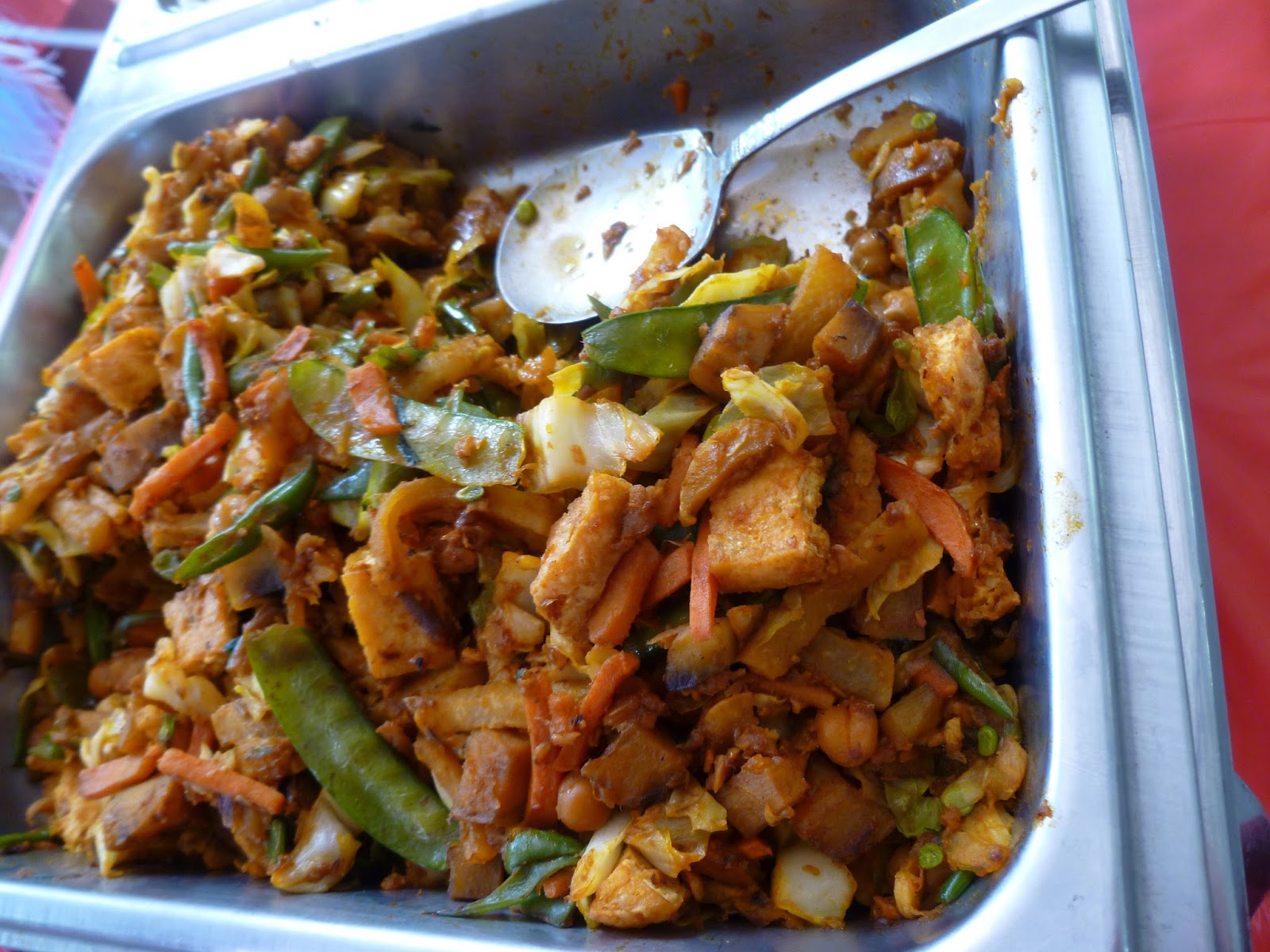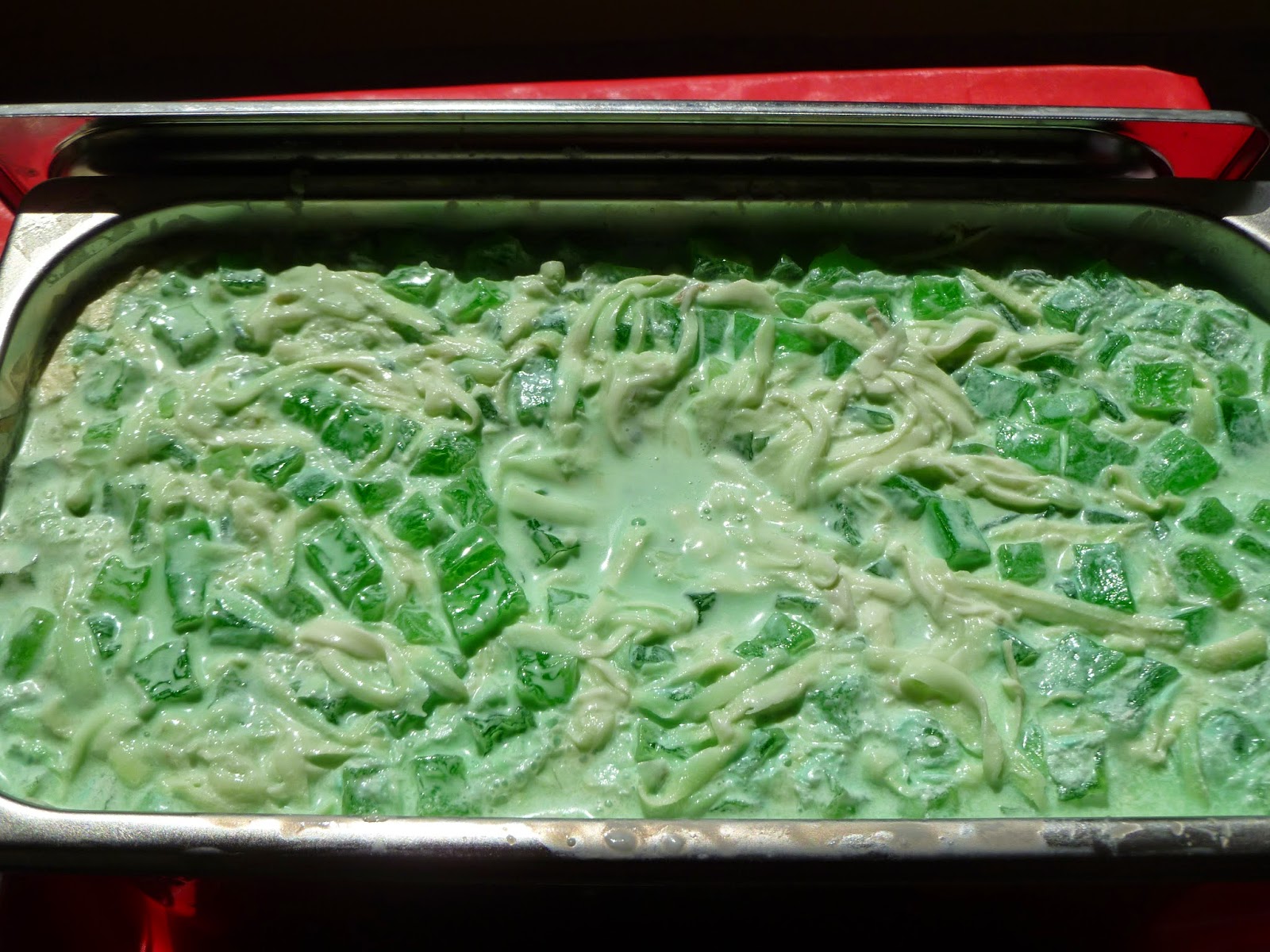Pure Gold grocery store - visited December 26, 2014, Pasig, Philippines
 |
| The walkalator |
For those of you who’ve never
been to the Philippines, it might seem odd for me to blog about a grocery store
but, as someone who likes all things food, I also like to get a picture of what
all things food in other countries are like, even something as mundane as the
grocery store.
Perhaps your mental picture of
the Philippines only includes roadside fruit stands and crude structures selling
street food or small “sari-sari” stores that are like little condensed, limited
7-11s where you can buy rice, canned goods, and soap plus the odd pack of
toothpaste and bananas.
If so, then welcome to Pure
Gold grocery store. The one we went to was housed in a large, two-story
building with a covered parking garage on the first floor and a “lobby” where
you enter past the security guard (who gives a cursory glance through your
purse like they do at Disneyland) and take the “walkalator” up to the second
floor which is the main floor of the grocery store. A walkalator is just like
an escalator but without the steps or a people mover such as the ones at an
airport except it slants upwards instead of being horizontal. Perfect for
anyone in a wheelchair.
Pure Gold is more than a
grocery store. It’s probably more like a variety store such as a Woolworth’s in
its American heyday. It’s a combination food court, separate pharmacy counter,
has a Red Ribbon Bakery stand, and besides groceries, sells appliances and
housewares.

I poked around the different
aisles, interested in seeing the wares on offer. As is typical in the
Philippines, there are a lot of familiar American products available: Spam,
Cheetos, Oreos, Betty Crocker cake mixes, Hershey candy bars and so on. As is
also typical, the American-born products are more expensive while the local
brands are cheaper. I did some quick comparison pricing and a can of Spam was
in the $3-$4 range, not unlike full price in the States, depending on where you
buy it and definitely more expensive than when I buy it on sale in bulk at
Costco. But that’s actually not a fair comparison because many Filipino jobs
don’t pay as much as even the US minimum wage. What a $10 an hour worker would
earn at In N Out might be what a worker in the Philippines would make in a day.
If they’re lucky. So for them to buy a can of Spam could conceivably eat up a
day’s wages. 1 can. Fortunately there are cheaper food options for people in
the Philippines but that might give you an idea of why a can of Spam might be
considered a luxury or a treat in some families. Everything’s relative. And
speaking of Spam, I was actually fascinated to discover it came in different
flavors. I’m not a big Spam eater myself but even I was intrigued by Spam
Tocino. I love tocino, a marinated Filipino pork dish. I didn’t buy it then but
afterwards, I asked my mom to bring back a can so I could try it.

I also had a moment of
nostalgia when I saw the end cap display of Milo. Milo is the local chocolate
powder drink mix. My grandmother used to have a cup of Milo every day and my
earliest memories were of her drinking it. She loved Milo.
Checking out is similar to any
American grocery store. The main difference is they still have baggers who bag
your purchases. Freezer items are rung up and placed together in the same bag
and box so they can remain chilled together for longer until you can get them
into the freezer at home, very important in a tropical country. All purchases
are boxed in cardboard boxes, similar to Costco who re-uses the shipping boxes
their foodstuffs came in, and tied with strong “straw” twine. When you
leave the grocery store, you show your receipt to the guard on your way out,
also a la Costco albeit there isn’t a Costco in the country.

It was a fun experience to
shop in the local grocery store and actually something I try to do no matter
which country I visit. You can always find local foodstuffs to try that you can’t get at
home. My nieces got the spicy shrimp chips and I bought
Nagaraya cracker peanuts, a favorite from childhood. I’m sure both are
available in Asian grocery stores in the US (and probably the Spam Tocino too)
but there’s something more special about buying it truly local.























































